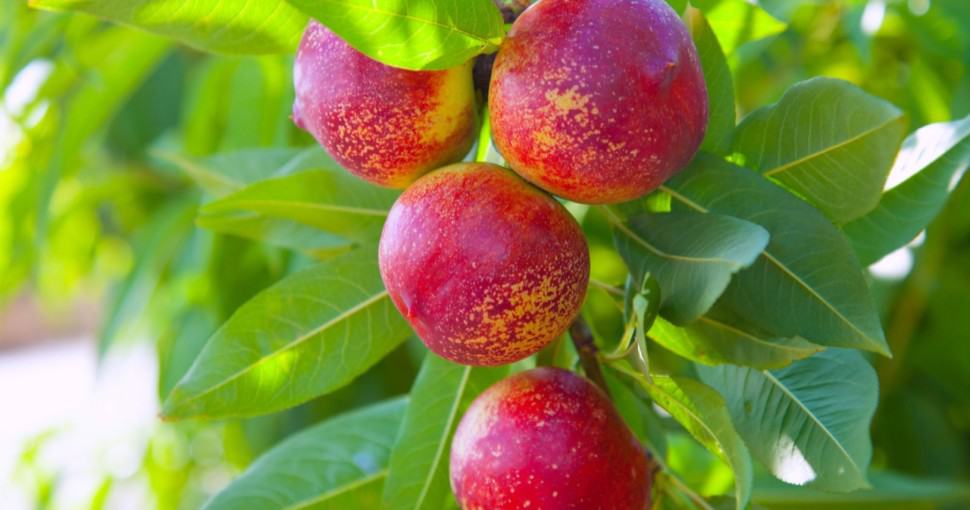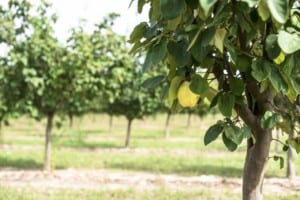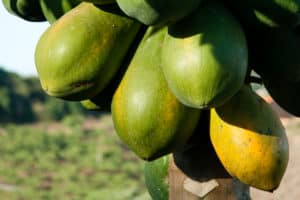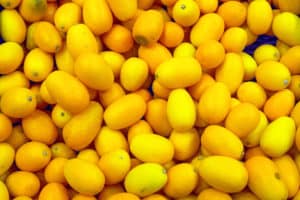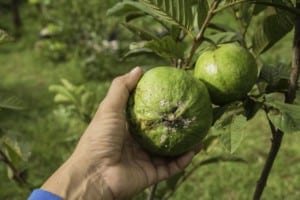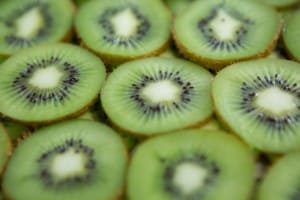With the exception of one gene, nectarines are genetically identical to peaches. The main difference is that nectarine trees produce smooth fruit, while peaches are fuzzy. Nectarines are also more sensitive than peaches and can easily be bruised or damaged. They are smaller and have a redder color than peaches. However, the variation in hue is most likely owing to nectarines’ lack of fuzz.
Contents
- 1. Nectarella Nectarine
- 2. Snow Queen Nectarine
- 3. Mesembrine Nectarine
- 4. Fantasia Nectarine
- 5. Morton Nectarine
- 6. Patio Nectarine
- 7. Sauzee King Nectarine
- 8. Lord Napier Nectarine
- 9. Garden Lady Nectarine
- 10. Mericrest Nectarine
- 11.Arctic Jay Nectarine
- 12.Armking Nectarine
- 13.Double Delight Nectarine
- 14.Early Sungrand Nectarine
- 15.Dwarf/Stark Sunglo Nectarine
- 16.Heavenly White Nectarine
- 17.May Grand Nectarine
- 18.Sun Home Nectarine
- 19.Kreibich Nectarine
- 20.Pacific Pride Nectarine
- 21.Red Sunset Nectarine
- 22.Red Gold Nectarine
- 23.Hardired Nectarine
- 24.Atomic Red Nectarine
- 25.Cavalier Nectarine
- 26.Desert Dawn Nectarine
- 27.Firebright Nectarine
- 28.Flamekist Nectarine
- 29.Flavortop Nectarine
- 30.Goldmine Nectarine
- 31.Harko Nectarine
- 32.Honey Kist Nectarine
- 33.Independence Nectarine
- 34.John Rivers Nectarine
- 35.Jolly Red Nectarine
- 36.Juneglo Nectarine
- 37.Le Grand Nectarine
- 38. Liz’s Late Nectarine
- 39.Nectacrest Nectarine
- 40.Panamint Nectarine
- 41.Pioneer Nectarine
- 42.Royal Giant Nectarine
- 43.Silver Lode Nectarine
- 44.Southern Belle Nectarine
- 45.Stanwick Nectarine
- 46.Stark Crimson Nectarine
- 47.Sunred Nectarine
- 48.Zee Glo Nectarine
- 49.Moon Grand Nectarine
- 50.Sunraycer Nectarine
Nectarines were first cultivated around 2,000 years ago in China. They were created by a spontaneous mutation from a peach. Nectarines were farmed in Persia after spreading from China across Western Asia. Nectarines were brought to Greece and Rome, Italy from Persia. They did not reach Northern Europe and England until the 16th century. The Spanish were the first to bring nectarines to America. They were planted in California, where they thrived and are still growing today.
They come in two variants, just like other stone fruits: clingstones and freestones. The flesh of clingstone nectarines clings to the pit, whereas the flesh of freestone nectarines easily separates from the pit. Both types are juicy and delicious. So, if you are looking for fresh and appetizing fruits, planting a nectarine tree in your garden may be a good idea.
Nectarine trees do well in areas with a cool winter season. They go dormant for a period of time every year. The trees survive for about 40 years and can reach a height of 30 feet in the wild. In orchards, however, trees are kept at the height of roughly 12 feet to make harvesting easier. The fruit is generally plucked before it ripens completely to make sure you have plenty of time to enjoy it.
Growing a nectarine tree from seed takes three to four years to produce fruits, same as most other stone fruit trees, including cherry trees, plum trees, and apricot trees. However, purchase a young tree from your local nursery to put in your home garden can produce quicker results. Ready to grow a nectarine tree in your garden or backyard? Here are some varieties you can consider.
Related: When are nectarines in season?
1. Nectarella Nectarine
- Prunus persica var. nectarina ‘nectarella’
- Harvest Season: End August
- Tree Height: 5 to 7 meters
Nectarine ‘Necterella’ is a dwarf variety of nectarine with a moderate growth rate, which makes it perfect for container gardening. Growing nectarines in containers mean you can relocate the plants indoors during frosty spring months to protect the blossom. The tree produces attractive orange-red fruits with a distinctive sweet flavor.
2. Snow Queen Nectarine
- Prunus persica var. nectarina ‘snow queen’
- Harvest Season: Mid August
- Tree Height: 10 to 12 feet
The Snow Queen Nectarine is a medium-sized tree. It produces some of the tastiest and juiciest nectarines available. The freestone fruit is characterized by its snow-white flesh and fine texture. Snow Queen ripens early but prefers a warm, low-humidity climate. The tree does exceptionally well on the West Coast.
3. Mesembrine Nectarine
- Prunus persica var. nectarina ‘mesembrine’
- Harvest Season: August
- Tree Height: 9 to 13 feet
A relatively new variety, Mesembrine was first introduced in 2005 by the Institut National de la Recherche Agronomique (INRA) in France. It yields yellow-fleshed flat nectarines near the end of the peach and nectarine season. The fruits have a sweet-sharp flavor that is well-balanced. In the spring, clusters of lovely pink blossoms appear.
4. Fantasia Nectarine
- Prunus persica var. nectarina ‘fantasia’
- Harvest Season: Late July to mid-August
- Tree Height: 10 to 12 feet
Fantasia Nectarine is a lovely tree with fragrant spring flowers and enormous, oval-shaped yellow fruit with a red flush. When collected early, the freestone fruit is golden, firm, and smooth with a sweet-tart flavor. The longer the fruit hangs on the tree, the sweeter and juicier it becomes. Fantasia nectarines are readily used in pies and for canning.
5. Morton Nectarine
- Prunus persica var. nectarina ‘morton’
- Harvest Season: July to August
- Tree Height: 10 to 12 feet
Morton Nectarine is a deciduous tree with an upright rounded growth and glossy, finely-toothed dark green leaves. Clusters of pink flowers appear in late spring, followed by tasty, deep red fruit that is ready for harvest in the summer. Morton nectarines are tiny and round with light-yellow pulp. It is a popular commercial variety.
6. Patio Nectarine
- Prunus persica var. nectarina ‘nucipersica’
- Harvest Season: Late August
- Tree Height: 3 to 4 feet
Patio Nectarine is a patio variant of ‘Madame Blanchette.’ To keep the tree even more compact, it is often grafted on to dwarf peach seedling rootstock using sophisticated grafting techniques. The fruits turn a deep rose-red color and have delicious white juicy flesh. The tree is mildly frost-resistant, meaning it is a good choice for colder regions.
7. Sauzee King Nectarine
- Prunus persica var. nectarina’ sauzee king’
- Harvest Season: August
- Tree Height: 10 to 12 feet
Also known as Peento nectarine, Sauzee King Nectarine is a compact tree that enjoys full sun and yields a lot of fruit at a young age. It is an exceptional early-season cultivar that boasts sweet and luscious white flesh. You can help your tree yield huge fruits by thinning regularly. The fruit’s exterior is mostly red, with a tinge of yellow underneath.
8. Lord Napier Nectarine
- Prunus persica var. nectarina ‘lord napier’
- Harvest Season: August
- Tree Height: 8 to 10 feet
Lord Napier Nectarine is an early ripening variety featuring white flesh which falls away from the stone, making it easier to devour the sweet and juicy fruit. The tree is a reliably heavy cropper once established, producing large fruits with excellent flavor. The fruits may be crimson or pale yellow in color. It is also one of the best outdoor varieties.
9. Garden Lady Nectarine
- Prunus persica var. nectarina ‘garden lady’
- Harvest Season: August
- Tree Height: 5 to 7 feet
Garden Lady is a slow-growing, self-fertile, deciduous tree that requires no pollination and makes an excellent patio fruit tree. It is a dwarf variety that stays about 78″ or less at maturity, requiring no pruning. In the spring, the branches are covered in a beautiful display of pink blossoms, which are followed by luscious, juicy fruits with a dark yellow flesh and rose pink skins. The flesh does not stick to the seed pit, allowing for easy easting and culinary preparation.
10. Mericrest Nectarine
- Prunus persica var. nectarina ‘mericrest’
- Harvest Season: Mid to late August
- Tree Height: 12 to 15 feet
Mericrest Nectarine Produces a large number of gorgeous, medium-sized, dark red, smooth-skinned fruits with a firm yellow flesh and a mild, acidic flavor. This freestone type is great for fresh eating and canning. In mid to late August, the fruit ripens. Mericrest, one of the hardiest nectarine kinds known, can withstand temperatures as low as -14° F without losing its harvest.
11.Arctic Jay Nectarine
- Prunus persica var. nectarina ‘arctic’
- Harvest Season: July to August
- Tree Height: 10 to 12 feet
Arctic Jay is a beautiful, semi-dwarf variety that produces stunning, firm, freestone fruits with crimson flushed skin and exquisite white flesh. Blooms usually appear between mid-March and early April. Pruning and thinning are required for consistent, high-quality crops. High humidity is something he despises. Adequate drainage and moderate fertility are required for best results.
12.Armking Nectarine
- Prunus persica var. nectarina ‘armking’
- Harvest Season: August
- Tree Height: 6 to 16 feet
Armking Nectarine is widely grown in Southern America. It is a relatively cold hardy deciduous tree that yields fresh, juicy nectarines with a smooth exterior and firmer flesh. It’s a clingstone with a lovely yellow flesh and silky green-golden skin with a scarlet blush. Pluck your delicious, sweet fruit when the skin reaches the proper orange-red color, and the flesh is tender close to the stalk, pluck your delicious, sweet fruit.
13.Double Delight Nectarine
- Prunus persica var. nectarina’ double delight’
- Harvest Season: August
- Tree Height: 15 to 18 feet
Double Delight is a hybrid cultivar. The tree puts on a delightful display of showy double-petaled flowers during springtime. As the season progresses, you’ll love the Double Delight’s consistent and copious fruits. The vivid red fruits typically hang on the outside of the canopy, boosting the ornamental value of the tree.
14.Early Sungrand Nectarine
- Prunus persica var. nectarina’ early sungrand’
- Harvest Season: August
- Tree Height: 6 to 12 feet
Early Sungrand Nectarine is a hardy, deciduous tree that produces lovely, sweet fruits that are bigger in size and superior in flavor. They have a huge pit, but because of the size of the oval-shaped fruit, there is plenty of juicy nectarines to eat. White flowers appear in spring.
15.Dwarf/Stark Sunglo Nectarine
- Prunus persica var. nectarina ‘stark sunglo’
- Harvest Season: August
- Tree Height: 8 to 10 feet
Known as the nectarine queen, Stark Sunglo is an exclusive introduction from Stark Bro’s of Louisiana, Missouri. The dwarf variety is hardy and productive. The trees provide standard-sized fruit, but they fit into smaller spaces and are easier to care for. Early spring brings a profusion of pink blooms, which are followed by enormous, red-skinned nectarines with golden yellow meat.
16.Heavenly White Nectarine
- Prunus persica var. nucipersica’ heavenly white’
- Harvest Season: Mid July to August
- Tree Height: 8 to 14 feet
Heavenly White develops is a semi-dwarf, deciduous tree that produces super sweet reddish-cream nectarines that are ideal for jams and preserves as well as eating fresh. Pollination for other nectarine types is provided by this self-fruitful tree. With summer trimming, it can be kept to a height of 8′-10′.
17.May Grand Nectarine
- Prunus persica var. nucipersica ‘may grand’
- Harvest Season: Mid July to August
- Tree Height: 10 to 12 feet
Nectarine May Grand is a small tree, perfect for gardens with limited space. It yields huge, round to oblong-shaped, yellow-fleshed freestone nectarines that are known for their outstanding flavor and early maturity. The skin tone is red against a yellow backdrop. Fresh fruit, drying, and cooking are all possible uses for the delicious fruit.
18.Sun Home Nectarine
- Prunus persica var. nucipersica ‘sun home’
- Harvest Season: August
- Tree Height: 10 to 12 feet
Known for its ornamental foliage, showy flowers, and mouth-watering fruits, Sun Home Nectarine is a popular variety among home gardeners. Early in the spring, the tree exhibits a lovely pale pink blossom. Deep dark purple leaves emerge in late spring and gradually mature to good medium green, adding to the beauty of the tree. Fruits are also rich and flavorful. The flesh of Sunhome nectarines is yellow and has a reddish tint.
19.Kreibich Nectarine
- Prunus persica var. nucipersica ‘kreibich’
- Harvest Season: Mid August
- Tree Height: 10 to 12 feet
Kreibich Nectarine was discovered by Roland Kreibich in Western Washington. This variety produces small, bright-red nectarines with white flesh and distinct flavor with a noticeable bitter note. Kreibich Nectarine is one of the most Peach Leaf Curl resistant Nectarines, so if you are looking for a low-maintenance variety, Kreibich Nectarine may be an ideal choice for you.
20.Pacific Pride Nectarine
- Prunus persica var. nectarina’ pacific pride’
- Harvest Season: Mid August
- Tree Height: 10 to 12 feet
Pacific Pride Nectarine TM is a novel variety that bears prolific crops of aromatic, delectably sweet, juicy, white flesh nectarines. It is a selected seedling of Kreibich Nectarine. The fruit is reddish and ripens around two weeks later than Kreibich, and keeps nicely in the refrigerator. The tree is hardy to -20°F.
21.Red Sunset Nectarine
- Prunus persica var. nectarina ‘red sunset’
- Harvest Season: Mid August
- Tree Height: 3 to 5 feet
The Red Sunset Nectarine is a dwarfing nectarine known for its compact form, tasty fruit, and striking deep red leaves. This nectarine tree is the most attractive of all, and it can simply be cultivated in a pot on your patio or deck. The fruit has a freestone texture and luscious, firm yellow flesh.
22.Red Gold Nectarine
- Prunus persica var. nectarina ‘red gold’
- Harvest Season: August
- Tree Height: 10 to 12 feet
The Red Gold Nectarine is a joy to have in the landscape since it blooms in the spring with vivid pink blooms before producing tons of dark red and gold nectarines that sparkle against the tree’s beautiful green canopy. The green leaves turn a brilliant yellow color in the fall, producing a brilliant display that lasts for months. Furthermore, the trees are drought tolerant and heat resistant and require little maintenance. This nectarine cultivar can endure temperatures as low as -20° Fahrenheit.
23.Hardired Nectarine
- Prunus persica var. nectarina ‘hardired’
- Harvest Season: Early August
- Tree Height: 10 to 12 feet
This Harrow, Ontario cultivar is top-rated for farmers west of the Cascades because it ripens early – even in milder summers – and thrives in USDA Zones 5-9. The tree has an appealing and spreading habit. It is resistant to bacterial spots and brown rot and is covered in huge, spectacular pink flowers in the spring. It bears a huge number of red, delicious, delectable, yellow-fleshed fruit.
24.Atomic Red Nectarine
- Prunus persica var. nucipersica ‘atomic red’
- Harvest Season: August
- Tree Height: 10 to 12 feet
Atomic Red is a beautiful ornamental tree. It produces stunning red flowers that will stand out in your landscape like a beacon. But Atomic Red is more than just flowers. It also produces a healthy harvest of medium-to-large, white-fleshed, tasty nectarines in the middle of the season. The tree is fast growing with upright growth.
25.Cavalier Nectarine
- Prunus persica var. nucipersica ‘cavalier ‘
- Harvest Season: Mid to late July
- Tree Height: 10 to 12 feet
Native to Virginia, the Cavalier Nectarine tree features a medium-sized fruit that is solid and aromatic with orange-yellow with mottled dark crimson. The flesh is resistant to brown rot. Cavalier nectarines soften quickly, so it’s better to select them while they’re still hard. For best results, plant your tree in a sunny location with well-drained, fertile soil.
26.Desert Dawn Nectarine
- Prunus persica var. nucipersica ‘desert dawn ‘
- Harvest Season: Mid to late July
- Tree Height: 15 to 30 feet
Desert Dawn trees are highly adaptable and prolific producers. They reach a medium size and look amazing in any landscape. The green foliage contrasts wonderfully with the solid red fruits when in season. The tree requires little to moderate watering once established. However, a little pruning helps ensure healthy growth and development. The fruit has a luscious, rich flavor, so if you like nectarines, this tree is for you.
27.Firebright Nectarine
- Prunus persica var. nucipersica ‘Firebright’
- Harvest Season: August
- Tree Height: 10 to 12 feet
The Firebright Nectarine tree is fast-growing and productive. It produces huge, yellow nectarines with a scarlet blush on the outside. The flesh is golden and firm, with a great flavor. The tree features an open-spreading form and features a light but showy bloom in spring.
28.Flamekist Nectarine
- Prunus persica var. nucipersica ‘Flamekist‘
- Harvest Season: August to September
- Tree Height: 12 to 15 feet
Flamekist is a deciduous tree that is vigorous and easy to grow. The fruit is hard but features a lovely, silky texture with golden skin and a subtle crimson flush. In the spring, the tree produces a fragrant display of pink blooms that are both attractive and fragrant. You’ll also enjoy a magnificent fruiting display because of the huge, round fruits.
29.Flavortop Nectarine
- Prunus persica var. nucipersica ‘Flavortop’
- Harvest Season: June to August
- Tree Height: 12 to 15 feet
The Flavortop Nectarine tree is a low-maintenance variety that produces plenty of fruit year after year. The tree fills up with red, smooth, sparkling nectarines by mid-summer. The freestone fruit is enormous, firm, and delicious. This lovely self-pollinating tree also lures pollinators in the spring with a robe of soft pink spring blossoms that exude their wonderful aroma into the air.
30.Goldmine Nectarine
- Prunus persica var. nucipersica ‘Goldmine’
- Harvest Season: February to March
- Tree Height: 8 to 10 feet
Goldmine is a small-sized Californian cultivar with outstanding leaf curl resistance. It produces a consistent crop of some of the best-tasting nectarines. The delicately delicious, white-fleshed nectarines typically ripe early, just two years after planting. The tree is also suitable for fan-training and espalier.
31.Harko Nectarine
- Prunus persica var. nucipersica ‘Harko’
- Harvest Season: Mid August
- Tree Height: 12 to 25 feet
Harko Nectarine is a cold-hardy Canadian cultivar. It is a deciduous tree with a rounded shape that features pink blooms and medium-sized, freestone nectarine with excellent flavor. The red-skinned and golden-fleshed fruit are great for canning, freezing, and eating right away. The tree requires little maintenance and should be clipped when it is dormant.
32.Honey Kist Nectarine
- Prunus persica var. nucipersica ‘Honey Kist’
- Harvest Season: Late June
- Tree Height: 10 to 15 feet
Honey Kist is a beautiful, upright tree with a dense canopy and great ornamental value. In the spring, the branches are covered in large, beautiful, spectacular pink blooms. During the fruiting season, the large, mid-tone green leaves contrast beautifully with the ruby-red ripe fruit. Yellow nectarine ripens early. They are sweet with no tartness.
33.Independence Nectarine
- Prunus persica var. nucipersica ‘Independence’
- Harvest Season: August
- Tree Height: 10 to 15 feet
Independence is one of the hardiest nectarine varieties that thrive from California to Minnesotabrillinat candy-red fruit is known for its winter hardiness and incredibly sweet flavor. The tree is suitable for colder places because the foliage and blossom buds are more winter and frost resilient than other kinds.
34.John Rivers Nectarine
- Prunus persica var. nucipersica ‘John Rivers’
- Harvest Season: Mid July
- Tree Height: 10 to 12 feet
John Rivers Nectarine trees are relatively small but grow quickly. Thanks to the abundance of pink blossoming in the spring, the tree is valued for its ornamental beauty. Fruits range in size from average to large. The skin is white with a scarlet blush, while the greenish-white flesh is soft and juicy.
35.Jolly Red Nectarine
- Prunus persica var. nucipersica ‘Jolly Red’
- Harvest Season: August
- Tree Height: 10 to 15 feet
Jolly Red Nectarine trees can produce very large fruit when properly thinned and cared for. The freestone nectarines boast a delicious flavor. The skin is bright orange-red over yellow.
36.Juneglo Nectarine
- Prunus persica var. nucipersica ‘Juneglo’
- Harvest Season: June to July
- Tree Height: 10 to 15 feet
Juneglo Nectarine is a hardy and low-maintenance tree. This cultivar is particularly precocious and bears fruit in cool, damp conditions. The semi-freestone fruit is red with slight russeting and split pits. The tree is ideal for growing in 5 to 9 USDA hardiness zones.
37.Le Grand Nectarine
- Prunus persica var. nucipersica ‘Le Grand’
- Harvest Season: August
- Tree Height: 10 to 12 feet
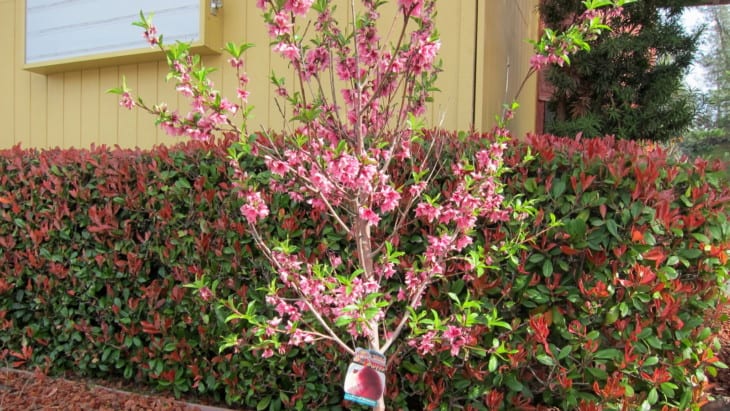
This beautiful species was introduced in 1942 by Californian Fred W. Anderson. Many crosses followed, but no Nectarine variety has ever matched the true LeGrand’s flavor and balance. It is a cling variety with freckled, russeted skin and no full, dark red blush.
38. Liz’s Late Nectarine
- Prunus persica var. nucipersica ‘Liz’s Late’
- Harvest Season: Late August to September
- Tree Height: 8 to 12 feet
With a rich, sweet, and spicy flavor, Liz’s Late nectarines are known for their unique flavor profile. Late in the summer, this dwarf, self-fruitful tree bears reddish-yellow nectarines. Fruits keep nicely in the refrigerator and are ideal for canning or cooking. When planted near other nectarine cultivars, the tree acts as a great pollinator.
39.Nectacrest Nectarine
- Prunus persica var. nucipersica ‘Nectarest’
- Harvest Season: Early September
- Tree Height: 8 to 12 feet
The Nectarest tree was first introduced by Rutgers University in 1947. The tree is easy to grow and produces sweet and juicy freestone nectarines. The medium to large-sized fruits have pure-white flesh and a pleasant flavor.
40.Panamint Nectarine
- Prunus persica var. nucipersica ‘Panamint’
- Harvest Season: Late August
- Tree Height: 12 to 16 feet
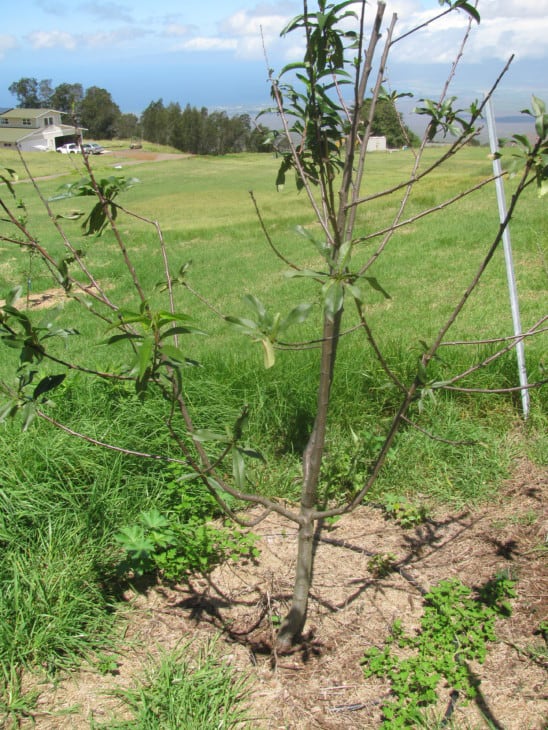
Panamint nectarines trees are ideal for low-chill fruit orchards. They have appealing green, glossy leaves and scented, red-skinned fruit, which contribute to their ornamental appeal. Moreover, the tree produces beautiful red, white, and light pink blossoms in spring.
41.Pioneer Nectarine
- Prunus persica var. nucipersica ‘Pioneer’
- Harvest Season: August
- Tree Height: 15 to 30 feet
Pioneer is a highly adaptable tree which makes it the perfect choice for home gardeners. However, it is a high-maintenance tree. Heavy pruning is advised to maintain size and boost productivity. The fruit is an older nectarine type that is distinguished by its yellow color on both the outside and inside. You’ll obtain a medium-sized thin-skinned fruit from the Pioneer Nectarine, which will ripen in the middle of the season.
42.Royal Giant Nectarine
- Prunus persica var. nucipersica ‘Royal Giant’
- Harvest Season: August
- Tree Height: 12 to 15 feet
The Royal Giant tree is an overachiever that produces delicious nectarines almost as big as apples. The tree is a high yielder. It is one of the most widely planted types in California by commercial producers. The large, yellow-fleshed clingstone fruit is sweet, tangy, and juicy.
43.Silver Lode Nectarine
- Prunus persica var. nucipersica ‘Silver Lode’
- Harvest Season: August
- Tree Height: 12 to 15 feet
For residential gardening, this is one of the most versatile of all fruit trees. They begin bearing enormous crops at 3 to 4 years of age and achieve peak productivity at 8 to 12 years of age. Heavy trimming is required to preserve the size and induce new growth. However, the tree does not tolerate extreme winter cold or late frost.
44.Southern Belle Nectarine
- Prunus persica var. nucipersica ‘Southern Belle’
- Harvest Season: August
- Tree Height: 3 to 5 feet
If you want nectarines but don’t have the space for a larger tree, consider growing a Southern Belle nectarine. They are naturally occurring dwarf trees that readily grow in containers and are frequently referred to as Patio Southern Belle nectarine because of their short height. They produce huge freestone nectarines with a sweet flavor.
45.Stanwick Nectarine
- Prunus persica var. nucipersica ‘Stanwick’
- Harvest Season: April to May
- Tree Height: 15 to 30 feet
The Stanwick nectarine was first grown in hothouses for wealthy connoisseurs at Stanwick Park in England. It produces small to medium-sized nectarines with speckled skin that is green and magenta in color. The peel is a little thicker than typical nectarines and gives the texture a delightful chewiness. The Stanwick is recognized for its musky, tangy-sweet, almost gamy flavor with a hint of pineapple.
46.Stark Crimson Nectarine
- Prunus persica var. nucipersica ‘Stark Crimson’
- Harvest Season: August
- Tree Height: 10 to 15 feet
Stark Crimson Nectarine was first introduced in 1993. It is readily grown in USDA hardiness zones 5 to 9. When cut open, the rich crimson fruit has a pure white core and is ideal for cooking, salads, and fresh eating. The sweet, juicy, and firm flesh adds a new dimension to nectarine desserts.
47.Sunred Nectarine
- Prunus persica var. nucipersica ‘Sunred ’
- Harvest Season: May to June
- Tree Height: 12 to 15 feet
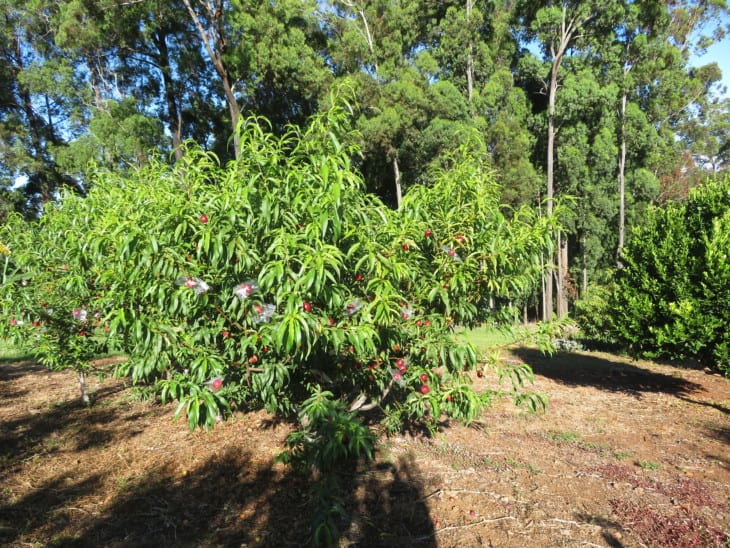
The Sunred Nectarine tree is a popular choice in the South. Even in warm winter climates like Florida, it produces medium-sized red nectarines with firm, yellow flesh, and a sweet, delightful flavor. Pink blooms appear in spring, adding to the overall beauty of the tree.
48.Zee Glo Nectarine
- Prunus persica var. nucipersica ‘Zee Glo’
- Harvest Season: Mid to Late August
- Tree Height: 8 to 14 feet
Zee Glo is a self-pollinating tree that produces tart-yellow fruit splashed with rich red in late summer. During the spring, the showy pink blossoms pollinate other nectarine trees and attract bees. With summer trimming, it can be kept to a height of 8′-10′.
49.Moon Grand Nectarine
- Prunus persica var. nucipersica ‘Moon Grand’
- Harvest Season: August
- Tree Height: 10 to 12 feet
The Moon Grand is a deciduous tree that produces medium-sized nectarines that appear to be almost as red as an apple. However, they are smaller in size with a slightly elongated shape. On the inside, the flesh is more yellow. The flavor is remarkable.
50.Sunraycer Nectarine
- Prunus persica var. nucipersica ‘Sunraycer’
- Harvest Season: Early May
- Tree Height: 6 to 16 feet
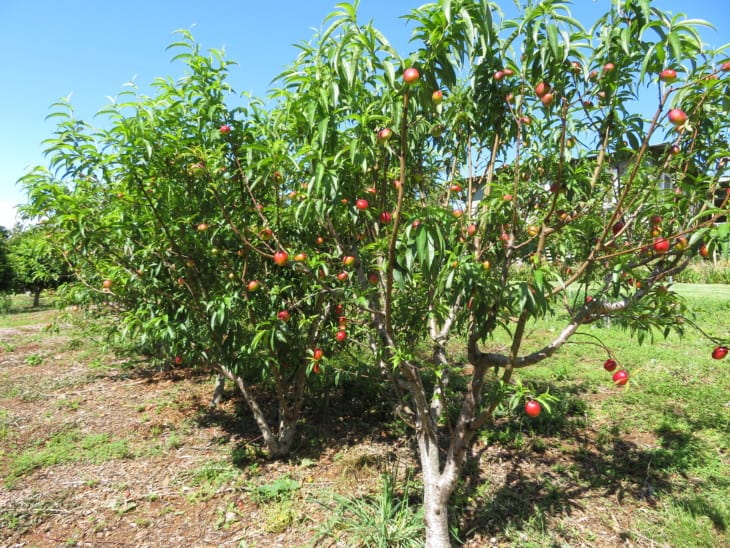
Sunraycer thrives in Central Florida and produces large golden semi-clingstone nectarines. The nectarine flavor is thick and delicious. The fruit is also resistant to a variety of diseases, which is one of the reasons why it is produced commercially.

